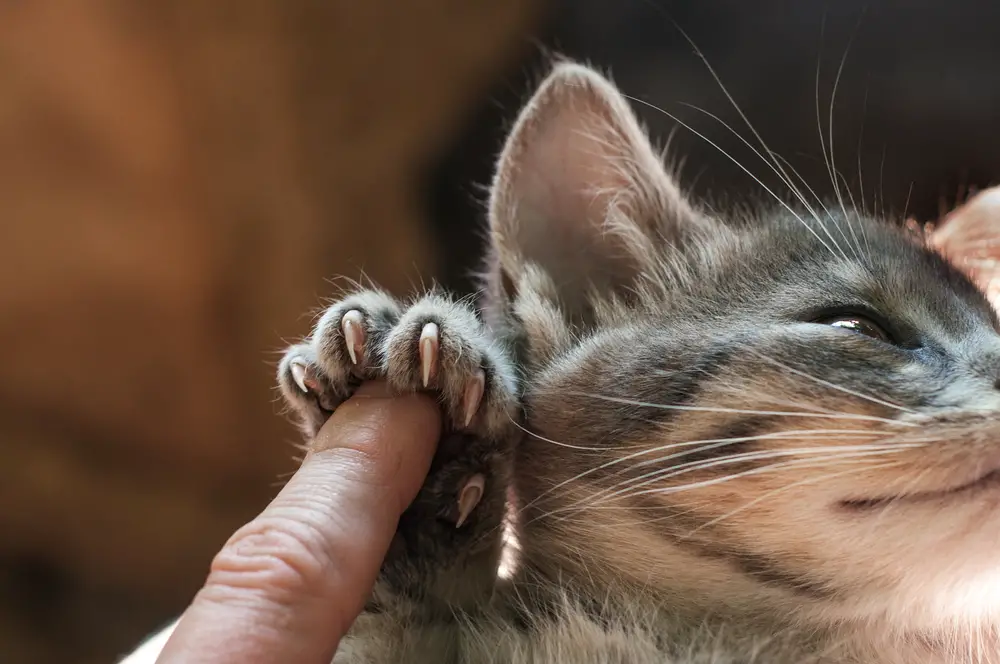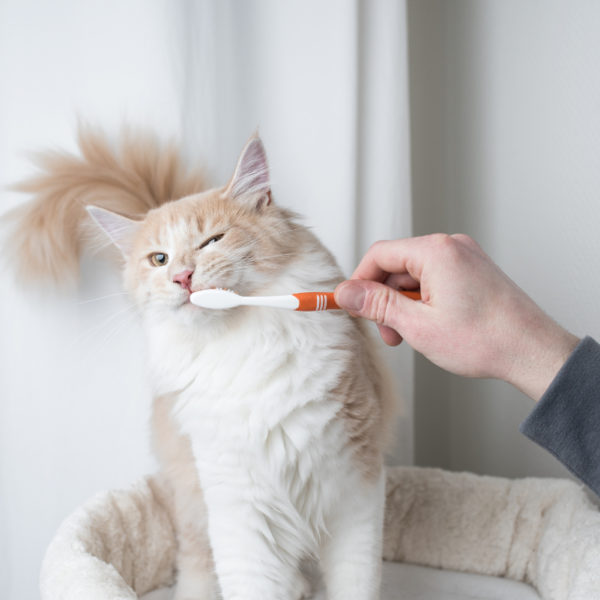The nails of cats are quite exposed to various damages and often it can lead to bigger problems. In this article we will go through the main causes of why cats break their nails, symptoms that will help you identify nail diseases in cats, and various home remedies and treatments that you can apply to help your cat, especially if her nails are bleeding, as quickly as possible!
Broken Nail Causes
The nails of cats are quite exposed to various damages, primarily of a mechanical nature.
Damage usually occurs due to sticking or twisting of the nail, which leads to its cracking, and often there is a complete loss of the nail from the tip of the finger. This happens most often outside when cats are hooked to some kind of wire or something similar.
For a cat, this is very painful so she will often starts limping and keeping her leg in the air. Heavier bleeding can also occur due to damage to the blood vessel.
As a rule, nail injuries should be repaired as soon as possible to avoid infections or larger-scale injuries. Because cats are constantly moving, the nail area is exposed to pressure so there is constant pain in that area.
A cracked and torn nail bleeds a lot, hurts a lot, heals for a very long time and it takes a long time for a new one to grow.
Symptoms
Nail diseases in cats and dogs are rare and in most cases they are various traumas.
But when they happen, the cat will often lick the damaged area, traces of blood, swelling, pain and consequent limping can be seen.
Such places are easily susceptible to secondary bacterial infections, so fertilization can occur.
Other disorders on the nails can lead to discoloration (whitening), the appearance of too small or too large nails, as well as the appearance of various deformities.
Furthermore, it is possible for the nails to soften, as well as for the appearance of longitudinal cracking, nail peeling and even inflammation of the corium.
Examination
When examining the animal, it is necessary to make a complete clinical examination and determine whether there are other signs that may have been ignored by the owner, especially the skin and hair.
It is especially necessary to examine the places where the skin changes shape:
- Perineal area,
- Vulva
- Foreskin
- Ear
- Lips
- Mucous membranes of the oral cavity.
It is important to determine whether it is a systemic disease (then the changes on the nails are usually symmetrical) or the disorder is only local.
Treatments
Treatment involves cutting and cleaning, removing any broken parts or the entire nail, as well as antiseptic baths. Treatment may include the use of antibiotics as well as antifungals, depending on the suspicion or diagnosis.
In cases where bleeding is present, various methods or means are used to stop the bleeding and I have listed them below.
1. Diet
For broken nails, I recommend adding the following to your cat’s diet:
- Omega fatty acids
- Biotin
- Zinc
- Vitamin A
- Vitamin E
Adding these to your cat’s diet and care should be of great help, but it is also highly important that your cat drinks enough water.
2. Collar
In order to prevent tearing of the bandage and licking the wound, the cat needs to put the so-called Elizabethan collar.
The collar’s primary purpose is to prevent your cat from directly traumatizing a surgical site or injured area of the body.
At first, cats are not thrilled when you put a collar on them and it usually bothers and upsets them a lot. It is important that the owner stays persistent and does not take off the collar, and in day two, your cat will get used to it.
The collar must be the right size to be functional because if it is too small it will not prevent licking, if it is too big it will slip off the neck and unnecessarily interfere with food and water intake as well as movement through narrower spaces.
3. Home Remedies
Because dust and microorganisms can always enter the wound, it is desirable to wash shallow wounds with mild solutions of antiseptics such as:
- Hydrogen peroxide
- Hypermanganese
- Rivanol
Apply them with clean gauze or a handkerchief and urgently seek the help of a veterinarian who will surgically (if necessary) and medically treat the wound.
If the wound open, there is a possibility of permanent infection. The rest of the nail is mostly removed. After that, the whole area needs to be thoroughly rinsed and bandaged. The paw is bandaged for several days with regular dressing to reduce irritation of the damaged tissue.
External bleeding is less dangerous because it can be stopped faster. In case of injuries to large blood vessels, the vessel should be connected if possible above the injury, otherwise a clean gauze or cotton handkerchief should be placed on the wound and connected with a bandage.
4. Vet
To definitively stop the bleeding, the help of a veterinarian should be sought, who will assess the severity of the injury and, if necessary, apply an antibiotic so that the wound does not become infected.
I advise you, if you have not already done so, to take your pet to the vet as soon as possible for an examination and for the injury to heal properly.



Leave a Comment